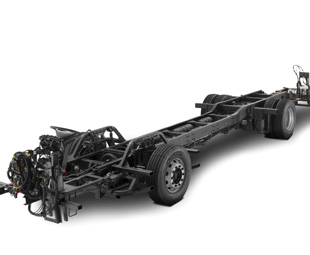Daimler expands in South America

FRANK BEETON reports on significant investments made by Daimler in Latin America.
Mercedes-Benz commenced the production of chassis suitable for bus applications in the South American countries of Argentina and Brazil during the 1950s – starting out in both cases with truck-type chassis that were fitted with bus superstructures by local bodybuilders.
Although some fully integral bus and coach types were subsequently produced in both countries, South America has increasingly settled on a tradition of using separate chassis and body manufacturers. This has encouraged the growth of giant bodybuilding concerns such as Marcopolo and Busscar on the continent.
The Mercedes-Benz bus range currently offered to South American customers, as well as selected export markets including South Africa, is made up of the LO series of front-engined midibuses, OF and OH series ladderframe chassis with front and rear-mounted engines respectively. It also includes the O500 family of “modular” or “buggy” chassis sub-frames that can be integrated into fully built buses or coaches by the specialist bodybuilders.
Parent company Daimler Buses recently announced a significant expansion to its Latin American bus operations, with the opening of a new US$ 2 million (R24,7 million) manufacturing plant for its wholly owned subsidiary Daimler Colombia SA, in Funza, near Bogotá.
This 11 000 m² facility has a planned production capacity of 4 000 units per annum, and will replace the previous Bogotá-based bus assembly plant first opened in 2012. It is intended to also provide export products for adjoining markets including Venezuela, Peru, Ecuador and Central America.
In Colombia, 2 300 Daimler buses are currently running with the SITP and TransMilenio bus rapid transit (BRT) operations in Bogotá, making up more than 30 percent of the total fleets of those two operators. CKD componentry to feed the new Colombian plant is to be sourced from the São Bernado do Campo plant in Brazil.
Daimler has also recently reported the sale of 40 articulated Mercedes-Benz O500MA electric trolleybuses, fitted with Colombian-built Busscar bodies, to Quito Passenger Transport in Ecuador. These specially converted vehicles will run on a 48-km BRT network, with a total daily throughput of some 430 000 passengers.
It has been operating since 1995 and was one of the first such systems in the world. Quito is located some 2 800 m above sea level and has severe topography, making it a particularly demanding operating environment for public transport.
The opening of the Funza plant will bring the total of Daimler commercial vehicle manufacturing sites in Latin America to five, with the others being located at São Bernado do Campo, Campinas and Juiz de Fora (all in Brazil), and Buenos Aires in Argentina.
Daimler estimates that the Latin American bus market will grow from its 2014 level of some 36 200 units to stabilise at more than 40 000 units per annum. In 2014, Daimler’s share of that market, with 17 600 units sold, was 48,6 percent.
The South African bus market has been drawing chassis and complete buses from South American sources for some time.
In addition to the front-engined, ladder-frame bus chassis, which are still the favoured choice of many local operators, fully built buses and coaches have also been shipped across the South Atlantic to South African operators when local bodybuilders have been unable to meet the requirements of particular orders.
The emergence of South America as a bastion of global front-engined bus manufacture is sure to keep this practice alive, well into the foreseeable future.
Published by
Focus on Transport
focusmagsa




